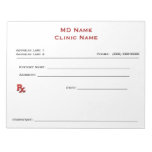Education is a great strategy to keep these patients healthy and engaged in their care.
The time you put into informing patients could pay off in the long term for their outcomes, as well as for the health of your medical business. Remember these high-deductible plans are new to many people, including the estimated 17 million more Americans with insurance since passage of the Affordable Care Act.
First off, the traditional question for patients is changing from ‘Do you have insurance?’ to ‘What kind of insurance do you have?’ as Medical Economics points out.
When you find out they have a high-deductible plan, keep these strategies in mind:
#1. Be as transparent as possible on pricing. Train your staff on how you want them to answer questions about pricing of your services over the telephone and in person. In the era of consumer-driven healthcare, more patients will be “shopping around” based on price. And when they’re in your exam room, patients are more likely to ask for a comparison of charges if you recommend different diagnostic or treatment options.#2. Collect Co-Pay or Co-Insurance at Point of Care. When patients ask how much a service will cost and agree to go forward, it’s a perfect opportunity for your staff to ask how they’d like to pay for their co-pay or co-insurance. Collecting up front will also save you from sending patient statements and collection reminders. It can also help keep your medical group revenue strong.
#3. Stress the Importance of Regular Healthcare. Research from the Rand Corporation suggests high deductible plans prevent some patients from seeking preventive care. Even though you already counsel patients on wellness and prevention, you may need to really emphasize the importance of regular screenings and annual exams. Point out that many of these plans cover preventive services regardless of the deductible, including cancer screenings, diabetes testing and childhood immunizations.
If you’re experiencing a higher number than usual of appointment cancellations, check your practice data to find out if a high percentage carry high-deductible plans. If this is the case, emphasize the importance of regular health monitoring when you send out appointment reminders.
#4. Be ready When They Ask for a Discount or Payment Plan. Many web sites suggest self-pay consumers and those with high-deductible plan patients ask for a negotiated fee. Generally, you have more freedom on what to charge cash-paying patients. In contrast, most insurance contracts state physicians must charge a negotiated rate for services. Some insured patients might even present themselves as uninsured to pay less, according to SelfPayPatient.com. Also, decide in advance how and when you want to offer a payment plan to patients if they ask.
#5. Continue the Education. Recommend reputable sites to help patients navigate the complexities of their high deductible plan features. For example, fairhealthconsumer.org offers this easy-to-understand information for patients: Understanding High Deductible Health Plans. MVP Health Care’s consumer-friendly video helps people understand the differences between a deductible, copay and co-insurance in less than three minutes. Forbes also includes useful answers in their ‘Should I Chose a High or Low Deductible Insurance Plan?’ article.




No comments:
Post a Comment